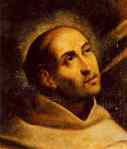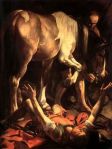It is worth having a few good examples to hand in this subject from recent claims about religious experiences.
What I intend to do here is to list a number of claims about religious experience and I wish to make it clear that I pass no judgement on any of them. As far as your examiner is concerned none of the following is inadmissible although from a critical viewpoint you, the reader may feel that some are less convincing than others.
St Bernadette of Lourdes 1858
In 1858 Bernadette Soubirous, a young girl aged 14 experienced a vision near a spring just outside the French town of Lourdes. The vision was of a lady who revealed herself as the “immaculate conception.” Bernadette believed that the vision was of the Virgin Mary. It is said that between February and July 1858 that the apparition appeared to Bernadette 18 times. There was a certain level of scepticism initially but soon a grotto was built, pilgrims began arriving and miraculous healings were recorded. Bernadette was declared to be a saint by the Roman Catholic Church in 1933.
Our Lady of Knock (Southern Ireland) 1879
On the evening of 21st August 1879, two women from the village were walking back to their homes in the rain. As they passed the wall of the church they saw figures standing there who were said to be the Virgin Mary,  St Joseph and St John. Angels were seen around them. The women called several other people to the church and they also experienced the apparition. A total of 13 villagers saw the Virgin Mary clothed in white, wearing a crown. Other villagers, who did not go to the scene, reported that a curious light could be seen that evening around the church. In time pilgrims came to the village to see the place where the vision had been reported and some pilgrims claimed miraculous healings. The Roman Catholic Church endorsed the claims in 1936. The site was visited by Pope John Paul II in 1979.
St Joseph and St John. Angels were seen around them. The women called several other people to the church and they also experienced the apparition. A total of 13 villagers saw the Virgin Mary clothed in white, wearing a crown. Other villagers, who did not go to the scene, reported that a curious light could be seen that evening around the church. In time pilgrims came to the village to see the place where the vision had been reported and some pilgrims claimed miraculous healings. The Roman Catholic Church endorsed the claims in 1936. The site was visited by Pope John Paul II in 1979.
Our Lady of Fatima (Portugal) 1917
Three shepherd children experienced six visions of the Virgin Mary at Fatima in Portugal. The visions, which were only seen by the children took place on the 13th day of six consecutive months starting in May 1917. The visions are quite complex and involved secrets which the children were asked to keep. News had spread about the visions and when the last apparition came there were over 70,000 people present to witness it. Even so Mary appeared only to the children. The waiting crowd however experienced a “Miracle of the Sun” which, according to the records, declared that the sun made wild movements in the heavens.
Those three should do you for Marian visions. There are many more, including
Our Lady of Guardalupe 1531
Reported visions of the Virgin Mary in Egypt – Zeitoun 1968 and Assiut 2001-2002.
Toronto Blessing (Toronto Airport Fellowship – Canada*) 1994
 This was a group religious experience which fascinated the press in Europe, but, apart from the congregation at the Airport Church in Toronto, was largely unnoticed in Canada and America. The name was given to a form of ecstatic worship experienced in this evangelical community. Members of the congregation would shake laugh uncontrollably, roll on the floor or even pass out at the touch of one of the ministers. This last action became known as “slaying in the spirit.”
This was a group religious experience which fascinated the press in Europe, but, apart from the congregation at the Airport Church in Toronto, was largely unnoticed in Canada and America. The name was given to a form of ecstatic worship experienced in this evangelical community. Members of the congregation would shake laugh uncontrollably, roll on the floor or even pass out at the touch of one of the ministers. This last action became known as “slaying in the spirit.”
Pentecostal evangelical churches were divided about the validity of this experience. Many believed it was a manifestation of the spirit of God. Others claimed it was demonically inspired.
Some churches in London practised slaying in the spirit. Others claimed to have experienced the “blessing”. Communities in South America and Africa also became involved in this sort of charismatic worship.
Along with the Toronto Blessing you might look up Slaying in the spirit and the phenomenon known as speaking in tongues. There are good links to all of these on my website follow the link-click here.
One final suggestion I would make for a candidate who wants to chance an original idea – why not include:-
Religious Society of Friends
A meeting for worship is conducted in silence. The silence is kept so that Friends may experience not just peace and quiet but also something of God. The purpose is to allow an openness to the inspiration of God or the Spirit.
Unlike the specific apparitions of Mary it is through the silence that individuals feel in touch with something beyond themselves. They attempt to enhance this experience when a Friend is moved to speak. Apart from the silence and the occasional contribution there is no other aspect to the worship in a Quaker meeting.
In this section I would use internet sources
St Bernadette http://www.catholic.org/saints/saint.php?saint_id=147
Knock http://www.marypages.com/Knock1.htm
Fatima http://www.theholyrosary.org/fatimaapparitions Beware though the site has piano music playing a Marian hymn
For more recent examples of religious experience, I would suggest the following link to my web page. Corporate Religious Experience
*Toronto Airport Fellowship is now known as “Catch the Fire Toronto.”







